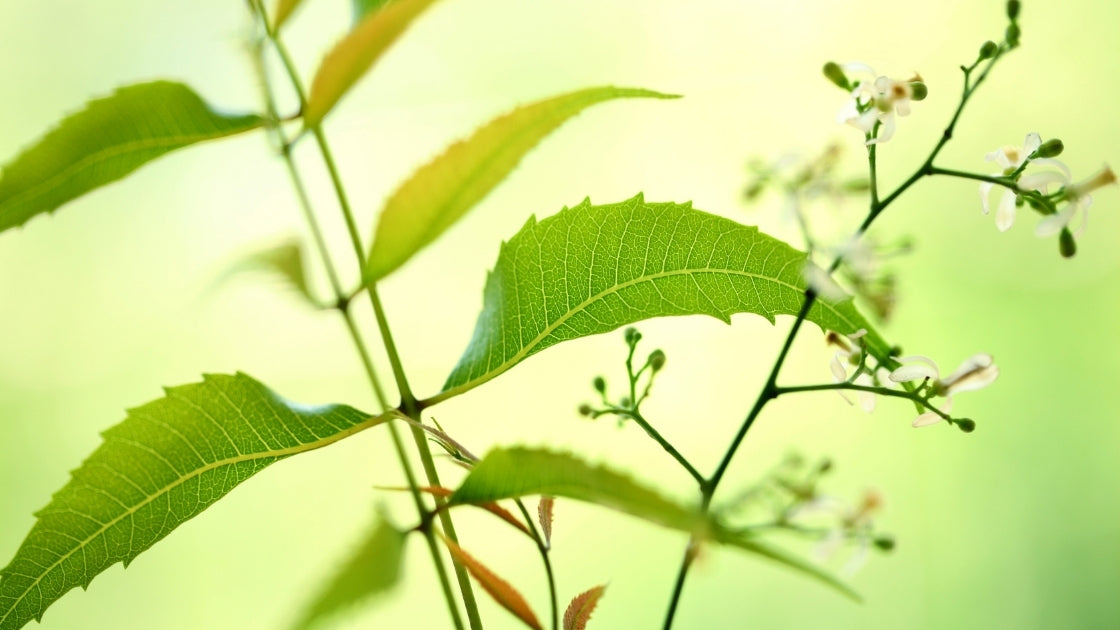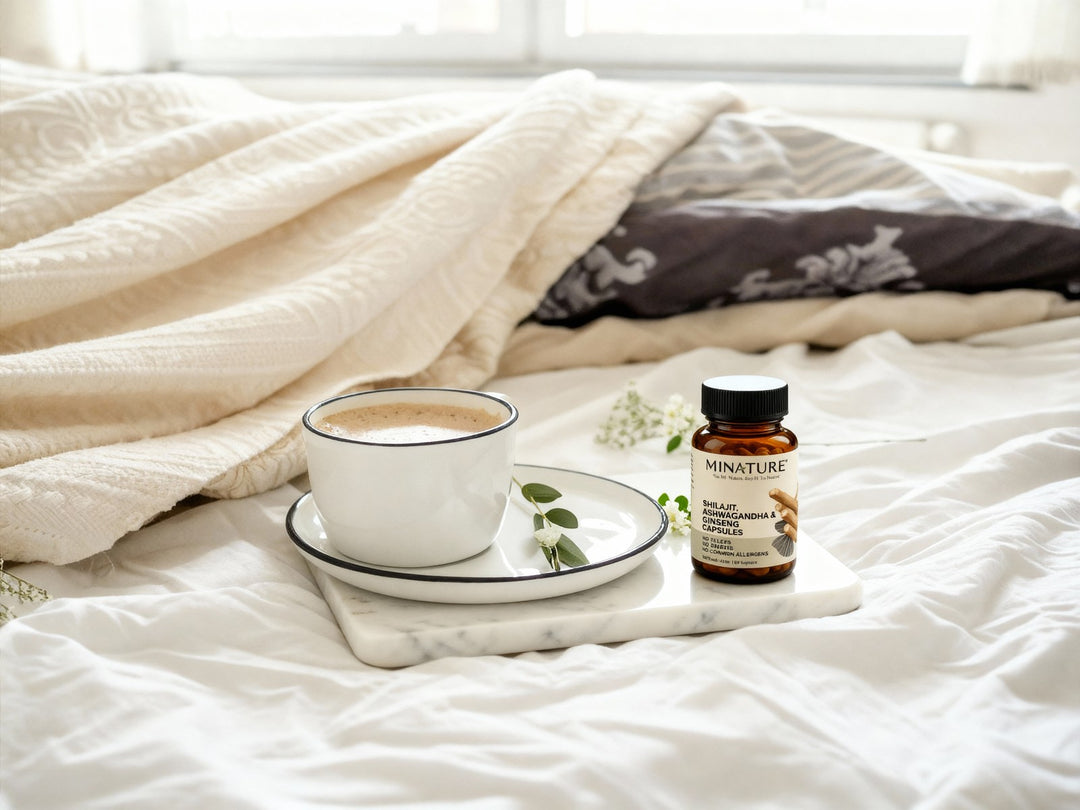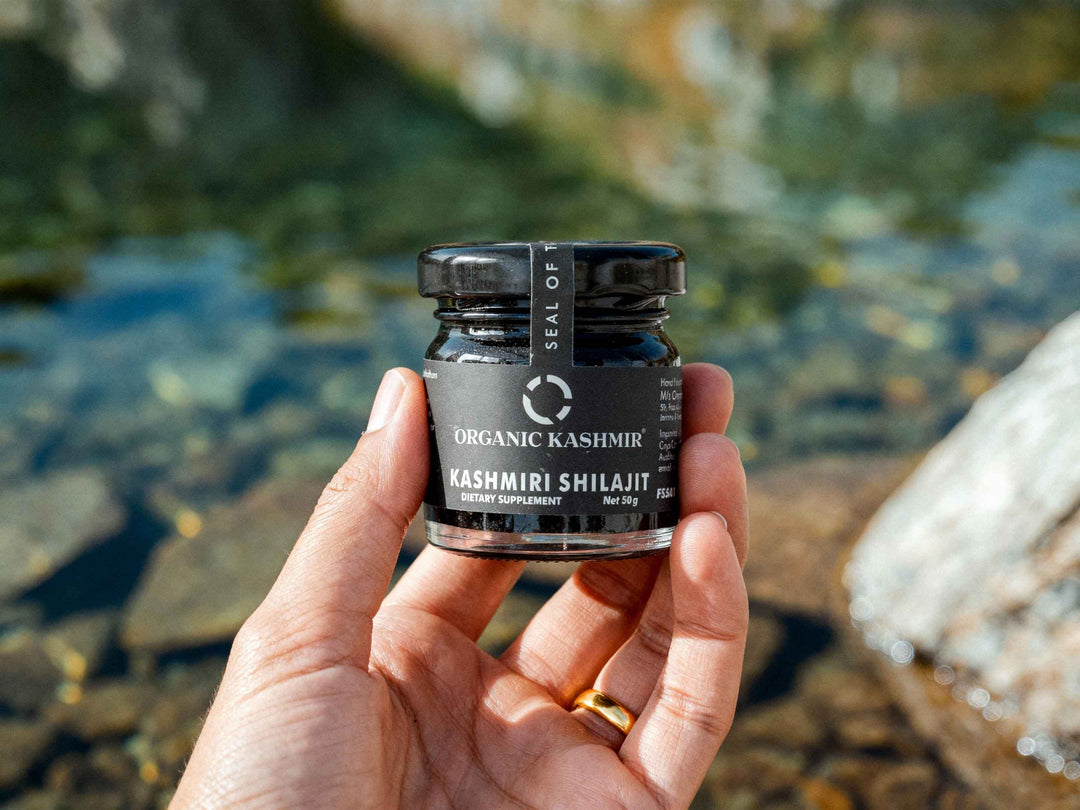Neem – The Treasure Herb of Ayurveda

Scientific Name: Azadirachta Indica
Introduction
If you have studied the basic concept of Ayurveda or researched Ayurvedic products online, then this particular herb might have caught your attention several times. Neem is one of the most prominent medicinal healing herb in Ayurveda.
Apart from medicinal usage, it has massive benefits in maintaining great skin health, purifying blood, making gums and teeth strong, killing intestinal worms and bacteria, healing wounds, fighting free radicals, calming the nervous system, improve liver heath and building strong immunity.
In India, it is used regularly as oil, cream, paste, liquid for hair, skin, teeth and joint pain. It is often used as starter for lunch as it is an ancient holistic ritual in India to eat something bitter at the beginning of the main course to increase appetite and to activate the taste buds. Besides, it’s used as a very good pest control ingredient. Neem is also used with Tulsi (Ocimum Tenuiflorum) and Ginger (Zingiber Officinale) for cough, cold, fever, nasal blockage and various common respiratory issues.
Other names of Neem
The plant is known as Nimba in Sanskrit. Other names of the plant are Arishtha (Ayurveda), Indian Lilac (English), Nimtree, Tamarkha (Burmese), Nimmi (Sindi), Margosa (Goa), Veppa (Malay), Dogonyaro (Nigeria), Kohomba (Sri Lanka), Vembu (Tamil), Niembaum (Germany), Margousier (French), Mindi (Indonesia), etc.
Origin
Neem is assumed to have originated in Burma and Assam. However, the entire Indian Subcontinent stands native to this herb. It is mainly found in dry tropical regions. It is mainly used in Southeast Asia including Bangladesh, Nepal, Sri Lanka, Thailand, Malaysia, Indonesia and Vietnam.
The plant is grown in semiarid to wet tropical regions. It is a typical tropical to subtropical plant. In India, it can be found on lands from Himalayan hills to Kerela. Over the last century, it has been established widely in Mauritius, Fiji, large part of Africa and South and Central America.
Description
Neem is a deciduous and fast-growing tree. It belongs to the meliaceae family. It thrives best on wet and sandy soils. It can tolerate very high temperature. It can survive on less water and not affected by the quality of water. It grows up to 15-20 meters and sheds its leaves during dry winter season. It can’t survive if the root is water-logged.
The leaves are beautiful, looks like beautifully cut feather and they are usually 8-16 inch long.
The flowers come out from January to April. The flowers are white and has mystical fragrance. During the monsoon, a bunch of flowers can be seen scattered, creating a very delightful appearance.
The fruits look like tiny little peanuts and have very thin skin. They contain yellowish-white, bitter-sweet pulp inside which is eaten by the bats or birds. The fruits then fall off, which are later used for several purposes. The seed growing in the central part of the fruit is the main portion people use the most.
Neem is known as one of the strongest shade-giving trees in drought-prone regions.
Ayurvedic properties of Neem
Rasa: Tikta (bitter) and Kashaya (Astringent)
Guna: Laghu (Light) and Rukshna (dry)
Virya: Shital (cold potency)
Vipaka: Katu (pungent)
Having cold potency, Neem pacifies pitta and kapha dosha and nourishes all the dhatus. However, excess intake can vitiate vata dosha. Vata dominated persons need to maintain moderate intake of neem.
Bio-active components of Neem
Azadirachtin and nimbolide are the main complex chemical components showing anti-radical scavenging activities, helpful in strengthening immunity system. The active constituents found in neem are nimbolinin, nimbin, nimbidol, salanin, sodium nimbinate, nimbidin, nimbanene and quercetin. All these components are present in leaves along with ascorbic acid, amino acid, 7-desacetyl-7-benzoylgedunin, beta-sitosterol, polyphenolic flavonoids which contain anti-fungal, anti-microbial, anti-oxidant, anti-ulcer and antibacterial properties.
Studies have found that some of these elements are active in reducing cancer growing cells as these components have shown tumor suppressing activities. The herb has also shown proinflammatory activities which produces anti-inflammatory actions.
Life-sustaining benefits of Neem
Antibacterial property
Studies have shown the bark, leaves, fruits and seeds contain high anti-bacterial properties. Neem is an age-old holistic approach to fight infections. Neem formulations have been effective in treating various skin infections, allergies, eczema, septic sores, indolent ulcers, scrofula and ringworms.
Antifungal property
Neem is an excellent antiseptic and antifungal herb. Various neem preparations like antiseptic liquid, oil, cream and leave paste are used to treat various fungal skin infections, athlete’s foot, yeast infections, ringworm and nail infections.
Neem extract relieves itching, flaking and dryness of the scalp and helps to get rid of dandruff. Neem paste provides nourishment to the scalp and promotes hair growth.
Few neem leaves soaked in the water overnight can be used to bath in the morning. It helps to prevent skin infections.
Immunomodulatory properties
Studies have found that the aqueous extract of Azadirachta Indica has shown an increase of antibody cells against harmful free radicals. The active immunomodulatory component works as an antioxidant to fight any damaging foreign invaders in the system. Regular intake of neem leaves powder has proven to improve overall health condition.
Excellent Blood Purifier
Neem is known as an amazing blood purifier. It is bitter and astringent in nature, hence, works wonder on empty stomach. Being high in antioxidants, it removes toxins from the blood penetrating the deep tissues, thus effectively purifies the entire system. Chewing 4-5 neem leaves in the morning helps in detoxifying the entire system.
Beautiful Skin Health
Being a natural blood purifier, neem helps in maintaining glowing and radiant skin. Paste of neem leaves can be applied to treat pimple, acne and sunburn. Also, neem leaves can be boiled in water and the water can be used as skin toner after cooling down. The natural skin toner helps in reducing scars, dark spots, pigmentations, blackheads and acne. Neem oil can be used to message the whole body before or after bath as skin moisturizer.
Excellent Wound healer
Neem is an excellent anti-inflammatory and anti-bacterial herb. The neem paste is an age-old holistic way to treat wounds. Studies have shown that the aqueous extract of neem has proven to increase cell regeneration and rapid progress in wound healing. In fact, neem oil is used with Haridra (Curcuma Longa) as a combination to treat critical non-healing wounds.
Strong gums
Neem twigs are used as toothbrush in India since ancient ages. It is called Neem Datun. It is made from neem bark which is antibacterial in nature and helps in curing gingival problems.
Neem bark is used to make toothpaste and tooth powders. While chewing neem datum, a bit of neem extracts enter in the body with saliva which helps in detoxifying the blood. Neem twigs help to make gums stronger, kill harmful bacteria in mouth and prevent toothache, cavity and periodontal diseases. Regular usage of neem twigs help to balance doshas and maintain healthy oral hygiene.
Anti-diabetic
The herb has potent anti-hyperglycemic and antidiabetic properties which are helpful in diabetic conditions. Type 2 Diabetes is a chronic metabolism illness which occurs due to abnormal secretion of insulin in the body. Regular intake of neem extracts along with proper diet with absolutely zero sugar intake works wonder to remove diabetes. The leave or bark extract is proven to lower the blood glucose levels with no major side-effects. Neem is nature’s gift to treat diabetes without any injection or powerful medicines.
Healthy gut
Neem leaves are anti-ulcer and anti-viral in nature. Neem extract from leaves is extremely beneficial in killing parasites and ringworms in the intestines. One can make a paste from few neem leaves and have it on empty stomach with lukewarm water in the morning. This promotes healthy bacteria in the intestine, prevents stomach ulcers, kills harmful worms and promotes healthy gut.
Insect Killer
The significant liminoid components (salanin, azadirachtin, meliantriol, nimbin) has proven to block insect growth effectively. Neem extract is potent phagorepellent and antimalarial agent which actively disrupt the growth of larvae and eggs of insects and thus stops the reproduction and spread of insects. Neem has been used as a natural pesticide, nematicide, insecticide and fungicide since early times in household and agricultural requirements.
Reduces inflammation
Being a potent anti-inflammatory, hepato-protective, anti-ulcer and chemo-protective agent, regular intake of neem leaves actively prevents cancer. The herb blocks the growth of tumors, ulcers and cancer cells. It also reduces inflammation in the joints and relives pain. A study in Japan has shown purified bark extracts were successful in killing various cancer cells.
Neem has been described as ‘Sarva Roga Nivarini’ (which heals all the diseases) in ancient classic Ayurveda text – Charaka Samhita. Neem is used as a domestic herb in every home in India for multipurpose usages. Neem formulations are applied in Unani, Homeopathy and other modern medicinal treatments to treat almost all major diseases.
Published By: Ayurveda Store New Zealand | All Rights Reserved.
Reference:
https://www.ncbi.nlm.nih.gov/books/NBK234651/
https://www.ncbi.nlm.nih.gov/pmc/articles/PMC4791507/
https://www.nap.edu/read/1924/chapter/8
https://www.esterlingsindia.com/product/neem-flower/
https://www.ncbi.nlm.nih.gov/pmc/articles/PMC4441161/






